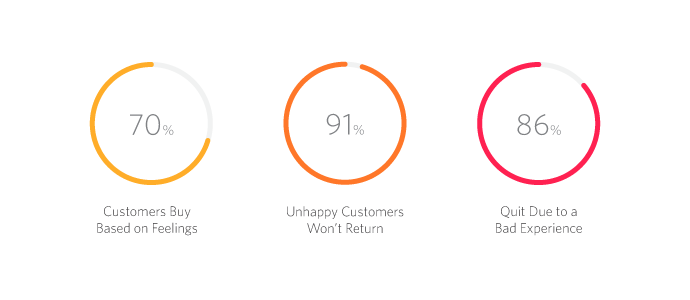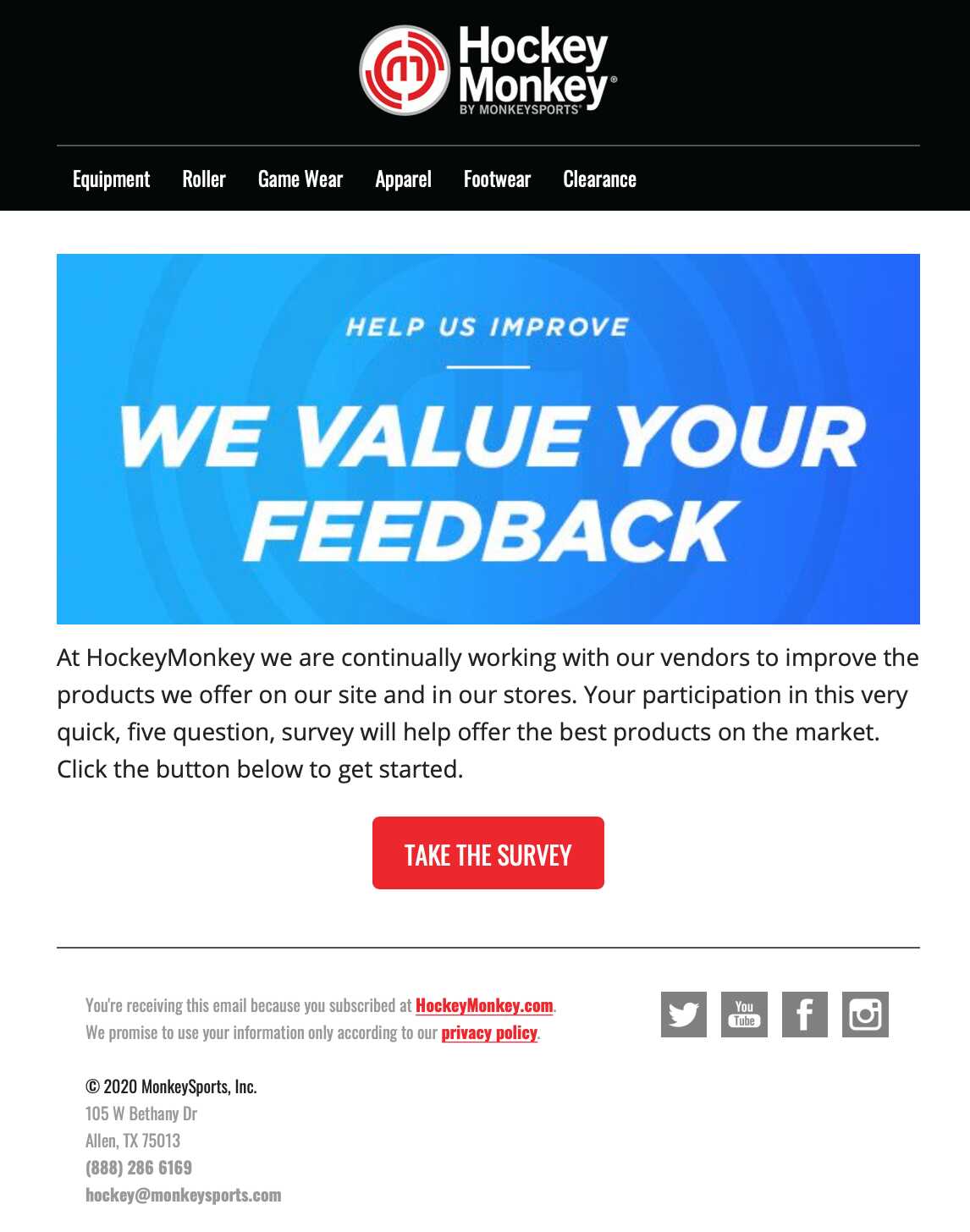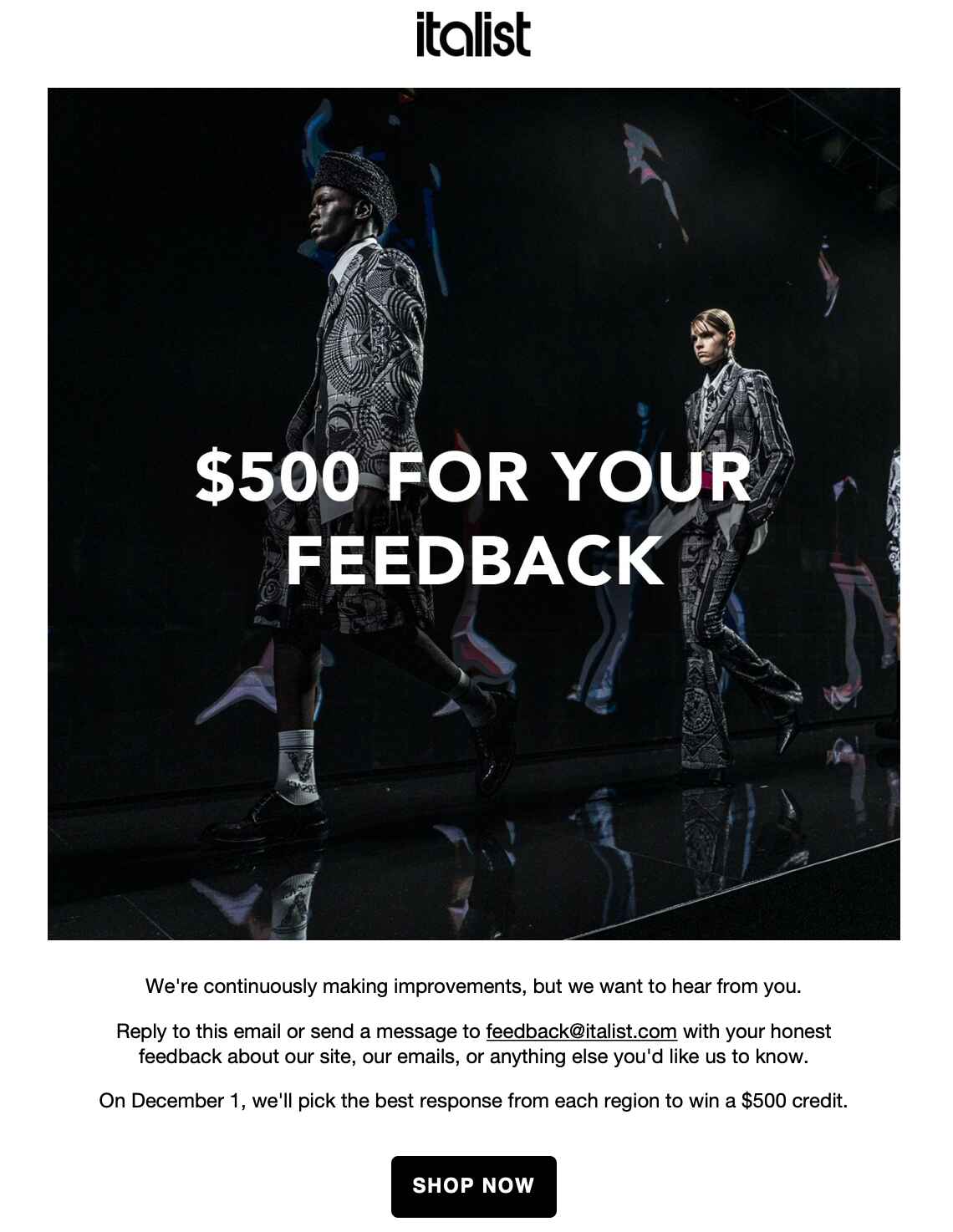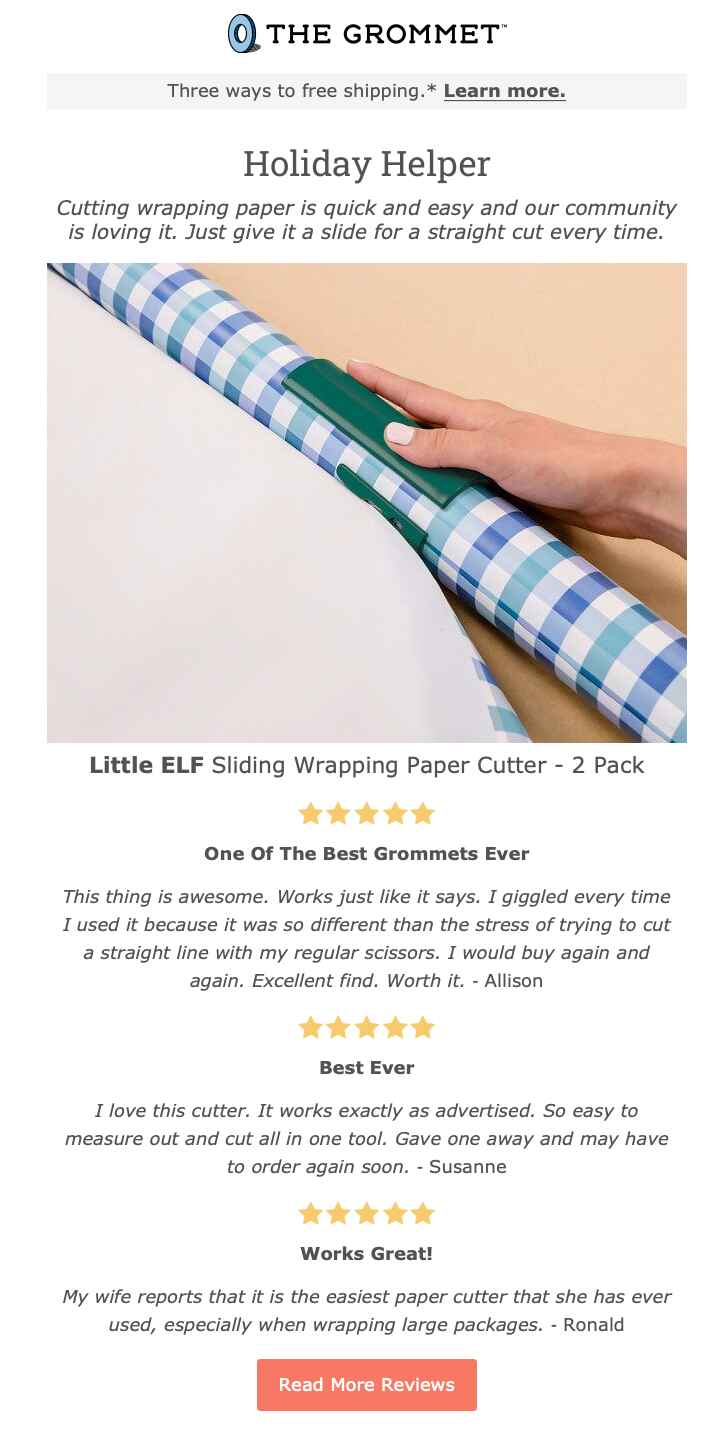Satisfied customers are the lifeblood of any business. Happy customers spend more on brands they support which means increased sales and revenue.
As a result, successful businesses aim to improve customer satisfaction. One of the most effective ways of accomplishing this goal is by listening to your customers – gathering feedback.
With each conversation or survey, you gain insights that help you improve the customer journey and customer satisfaction. Needless to say, feedback is essential and should be prioritized.
If you use email marketing as a part of your digital marketing strategy, consider asking for customer feedback with emails.
In this article, we’ll explain why businesses should bother about customer feedback, share the best customer feedback methods for email marketing, and analyze the best practices of asking for customer feedback to inspire your next email campaign.
Table of Contents
Why Bother About Customer Feedback?
When customers share their pain points with your business, they’re teaching you how to improve your product and they want to be heard. If you ignore your customers who tell you about their experiences, chances are that your unhappy customers can negatively affect your business growth:
Asking for customer feedback helps your business do the following:
-
Understand your audience better: Modern customers are not shy about expressing their opinions and sharing their experiences. For brands, this means a valuable source of information that helps them understand their target audience better.
-
Increase brand loyalty and trust: Modern customers want to be heard and valued, so they are more loyal to your brand if you pay close attention to their experiences and thoughts.
-
Improve your products and services: Customer feedback tells businesses about the advantages and disadvantages of your product or service, so you can improve it and therefore meet consumers’ expectations. Now when you have received customer feedback the next question is- How to manage customer feedback? You do not need to manually analyze long email threads and spreadsheets, instead, you can use a customer feedback management tool that will make the task easier.
If you’re looking for a reliable source of customer feedback, consider using email marketing to get it.
Why?
Most customers want to get brand information and updates via emails and 93.75% of companies request and store customers’ email addresses. Using email increases the likelihood that you’ll reach a larger group of your customers.
What is more, email marketing is one of the most effective yet affordable marketing channels. According to one report, 60% of marketers use mass email blasts to keep in touch with customers.
Now that you know how effective it can be, take a look at the list of customer feedback methods that work best for email marketing.
Best Customer Feedback Methods for Email Marketing
Data collection methods come in all types and forms: interviews, open-ended questions, focus groups, etc. Obviously, not all of them will work well when using email to collect feedback.
Here are three main customer feedback methods for email marketing:
-
Customer satisfaction surveys
-
Satisfaction ratings
-
Customer feedback widgets
Now that you know what methods are the best for email marketing, let’s learn more about them.
Customer satisfaction surveys
Customer satisfaction surveys need no introduction. When conducting market research, most businesses use this data collection method to see whether their customers are satisfied with the quality of their products and services.
With the right question types, surveys allow marketers to understand their target audience and customers’ level of satisfaction. This is especially true if you include it in your post-purchase emails.
Here’s an example of a customer satisfaction survey:
Satisfaction ratings
Another data collection method for email marketing is a satisfaction rating. It is that type of transactional email that encourages customers to use a numeric answer scale to share their feedback. It doesn’t require much time or effort to tap on the answer, so customers are more likely to share their thoughts. For brands, this means gathering feedback with ease.
Delving deeper into the realm of transactional emails, we find a treasure trove of untapped potential. Consider, for instance, the often-overlooked power of a free transactional email service. These platforms can be game-changers, offering businesses a cost-effective way to engage customers without breaking the bank. But here’s the kicker: it’s not just about sending emails; it’s about crafting experiences that resonate.
Picture this: a perfectly timed message, arriving in your inbox like a digital concierge, anticipating your needs before you even realize them. That’s the magic of well-executed transactional emails. They’re not just messages; they’re opportunities to dazzle, delight, and ultimately, drive customer loyalty through the roof.
Check out how Pizza Town used a creative approach when asking about customer satisfaction:
Note: the survey in the image above is flawed because there’s no neutral answer.
Customer feedback widgets
Another great option is to include feedback widgets in your emails. Many tools do this, so you can choose from a variety of templates and find an example that suits your needs.
For example, using emojis is an email marketing engagement strategy, so you can include different emojis that’ll allow subscribers to rate their overall satisfaction.
Ask for Customer Feedback with Emails: Best Practices
-
Include customer satisfaction surveys
Want to understand your customers? Ask them relevant questions about their experiences with a survey. In fact, a well-designed customer satisfaction survey helps businesses understand what customers think about their brand, product/service, or customer support.
Moreover, modern customers are happy to share their thoughts about your product, but most of them ignore surveys.
Why?
Most companies put their needs first so they create long-form surveys with difficult questions that take much time and effort to fill out.
The solution?
Not only should you create a well-designed survey, but you should also know how to promote it via email. Here’s an example from Hockey Monkey to illustrate:
A catchy email subject line, a short email, and a contrasting CTA button are just a few reasons why this email motivates subscribers to fill out the survey. Here are several tips on how to write an effective email that promotes your customer satisfaction survey:
-
Write a descriptive introduction that delivers the message.
-
Explain what is waiting for your participants.
-
Include an eye-catching call to action button.
-
Ask customers to share their experience
74% of customers aged between 23 and 54 years chose newsletter subscriptions for brand communication. Not only can people receive brand information via email, but they can also share their experiences. In fact, one research study showed that customers share both good (72%) and bad (62%) experiences with others. To learn more about your customer experiences, just ask them.
Here are several questions you can ask to encourage customers to share their experience:
-
What do you like/dislike about our product/service?
-
How satisfied are you with our product/service?
-
What could we improve about our product/service?
Use a mix of open-ended and closed-ended questions to get the most useful information from your surveys.
-
Offer an incentive
Most people like free stuff and 93% of consumers agree that brand incentives sometimes sway them to choose one brand over another. Simply put, offering an incentive is a great way to encourage your customers to share feedback.
When you strategically showcase existing customer stories, you subtly create a welcoming environment that helps encourage your customers to share feedback without feeling pressured. By highlighting authentic experiences and real voices from your customer base, you’re essentially giving potential respondents a clear roadmap of what meaningful feedback looks like.
This transparent approach transforms feedback from a corporate request into a collaborative conversation where every customer feels their perspective matters and could genuinely influence your brand’s direction.
Brand incentives include:
-
Gift cards
-
Coupons and discounts
-
Brand freebies
-
Premium upgrades
If you can’t offer an incentive to every customer, it’s a good idea to organize a contest and put ‘fill out a survey’ as a participation requirement.
Then, you can give away gift cards so that winners can choose the products they need. Not only does it make sure participants can be satisfied with your prizes, but it can also improve your sales.
Here’s an example of this strategy in action from Italist:
-
Set an example
Not all customers know that you want to hear their feedback, so it’s important to set an example. In fact, mirroring is an unconscious behavior when people copy another person’s actions, so sharing other customers’ reviews not only provides social proof but also amplifies word-of-mouth recommendations.
For instance, you can talk about your product and list reviews from customers, just like Holiday Helpers did it:
But if you want to bring your business to the next level, it’s a great idea to feature video customer testimonials.
Not only do video testimonials take much time and effort to make, but they also keep the audience hooked and engaged. Moreover, it can motivate other customers to do the same.
How to Create a Good Customer Feedback Email
If you know how to ask for customer feedback with emails, that’s great. But if you know how to do it the right way, that’s even better.
People are bombarded with emails from all sides, so it’s important to create an outstanding email that grabs the attention of your subscriber.
Before launching your customer feedback email marketing campaign, make sure your email meets the requirements.
Key elements of a good customer feedback email:
-
It’s personalized: Simple personalization like names or referring them to their customer purchase history can go a long way.
-
Simple design: Although including visual content in your email is a must, it’s a good idea to stick to a simple design if you want to hold the readers’ attention and encourage them to take the desired action.
-
Short and sweet: Long-read can work but in most instances, people have lost the attention span for content longer than 500 words. Don’t distract your respondents with unclear statements and tedious jargon. Keep your sentences clear, concise, and digestible.
-
Has a clear CTA: To collect customer feedback, guide subscribers on actions you want them to take. Having a clear CTA is a great way to encourage subscribers to share their feedback.
The Bottom Line
Customer feedback matters. If your product meets customer expectations, you can increase sales, attract new customers, and retain existing ones. Thus, it’s important to gather and analyze customer feedback.
Email marketing is one of the most popular communication strategies for most companies and it offers many interactive options, so asking for customer feedback with emails is a great idea that can bring your business to the next level.
So, have you ever asked for customer feedback with emails? Which strategy works best for your company?







